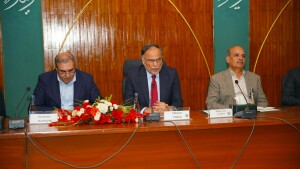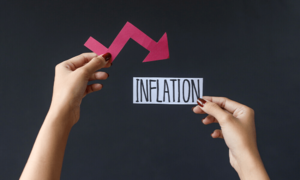It is reported that the newly-established Ministry of Energy earlier this week conceded before the Public Accounts Committee (PAC) that circular debt has soared to Rs 450 billion and the ministry is facing line losses of over Rs 200 billion, while Rs 214 billion worth of electricity is being stolen annually. This is one of the many hearings of PAC on the subject highlighting the people's concerns on the subject. These figures are worse than those inherited by the incumbent government in May 2013, which is not surprising as state of affairs in our public utilities has gone to the dogs and the impact of perceived cheap options of fuel mix based on LNG and coal is not felt on the national grid. The PAC recommended to the government to take up the issue of circular debt with the cabinet.
Another matter of concern raised at PAC was with regards to the apprehensions that the Sahiwal coal power plant in green belt areas of Punjab was one of the reasons behind increased smog in the province due to which people are contracting diseases such as tuberculosis (TB).
"Sahiwal is a green area where the coal plant should not be installed while China has closed down its coal power plants in its green and populated areas," observed the Chairman PAC. The line losses today stand at unprecedented 18 percent annually that translates into over Rs 200 billion.
The public was made to understand that soon after the PML-N took over charge, they had cleared the circular debt of over Rs 480 billion and that it is the issue of the past never to re-surface again and so was the promise to the nation on the issue of load-shedding. None of the two could happen, although lately there has been an improvement in load shedding but at a premium in the shape of higher tariffs.
Petroleum prices were much higher in the initial months of the incumbent government than today. In that period power tariff averaged around Rs 9 per unit - a reasonable rate for the industry and the public. Unfortunately, however, this is not the case today. The incumbent government enjoyed the lower oil prices but could not translate that opportunity into a blessing for people.
Ministry of Energy further clarified to the committee that the government was converting the power plant running fuel to gas. The officials of the Ministry of Energy told the committee that the 16.3 percent is technical and administrative line losses while only 1.6 percent line losses are due to theft of electricity.
The fact is that an attempt is being made to replace or supplement fuel oil with LNG which could provide some cost advantage but not good enough to provide consumers concessions in tariffs which continues to escalate.
The technical line and administrative losses cited as 16.3 percent and theft as 1.6 percent do not appear realistic because of the fact that the network is overloaded and there are serious administrative and governance issues in the power utilities in public and private sector alike. Power theft is often hidden or buried in technical and administrative losses.
The PAC observed that the government is recovering its losses from the people.
This concern of PAC is legitimate. If one takes a closer look at the monthly electricity bill he will observe the add-ons. All the inefficiencies of the system, the power theft, the corruption in the system and the impact of the circular debt are conveniently passed onto consumer.
The officials of the Ministry of Energy informed the committee that there were more than 200 million active consumers and 1.7 million connections were disconnected due to non-payment of dues and other reasons. One must, however, add here that disconnection alone is not good enough as people facing heavy pending bills prefer new connections to existing ones. There is a need for the tracking of such accounts so that new connectivity is possible only on settlement of pending bills.
The issue of losses in public utilities, the chronic circular debt and the conduct of the whole power sector supply chain inclusive of the conduct of Independent Power Producers (IPPs) is complex. No serious efforts have ever been made to address the subject truthfully and sincerely, either intentionally or out of lack of professional competence and capacity.
The incumbent government was fully aware of the poor conduct of the power utilities in the public sector and the harm it was inflicting on the economy of the country. In over four years of its rule, the government has failed to privatise these loss-making entities. It has also failed to restructure these entities into efficient concerns.
Chronic circular debt solution will remain elusive until and unless government ensures a transparent audit of the entire supply chain from receipt of fuel oil at port to delivery at power plants inclusive of the conduct of the intermediary entities such as PSO and similar. It will also be required to identify and plug gaps. Of significant importance is the full audit of the IPPs from fuel intake to power evacuation to the national grid.
The task of arresting circular debt and losses in the power sector is not an easy one but an inevitable one if the government has to move out of it for good. The question is if the government has the will to accomplish this homogenous task.
(The writer is former President Overseas Investors Chamber of Commerce and Industry)
BR100
11,866
Decreased By
-213.1 (-1.76%)
BR30
35,697
Decreased By
-905.3 (-2.47%)
KSE100
114,148
Decreased By
-1904.2 (-1.64%)
KSE30
35,952
Decreased By
-625.5 (-1.71%)


























Comments
Comments are closed.